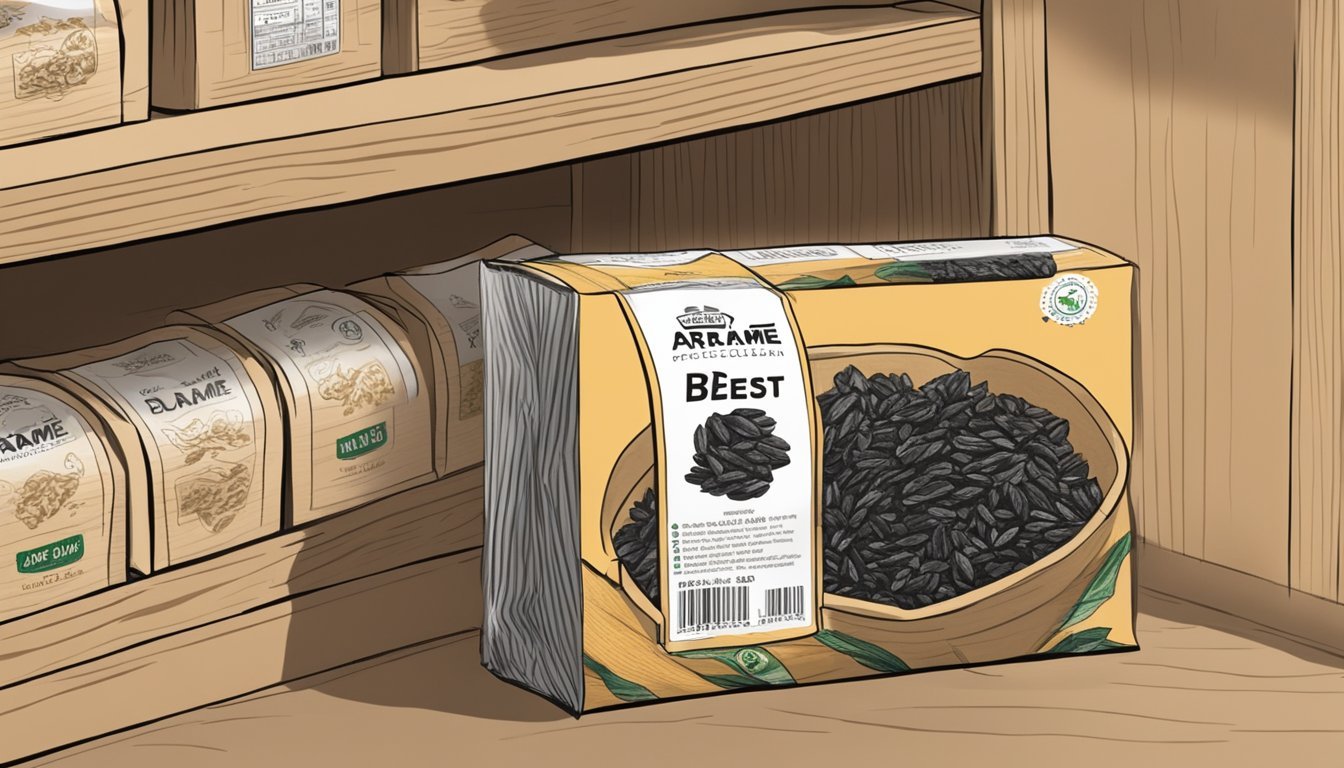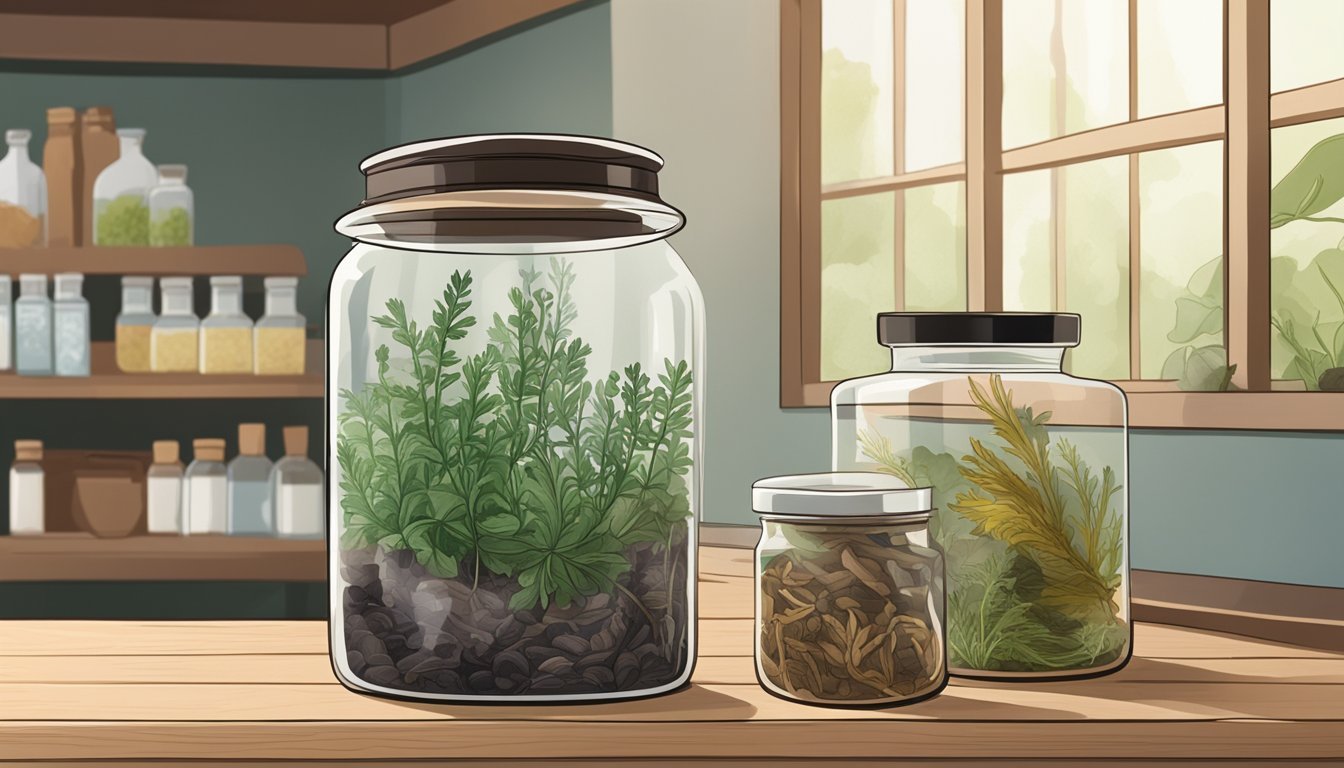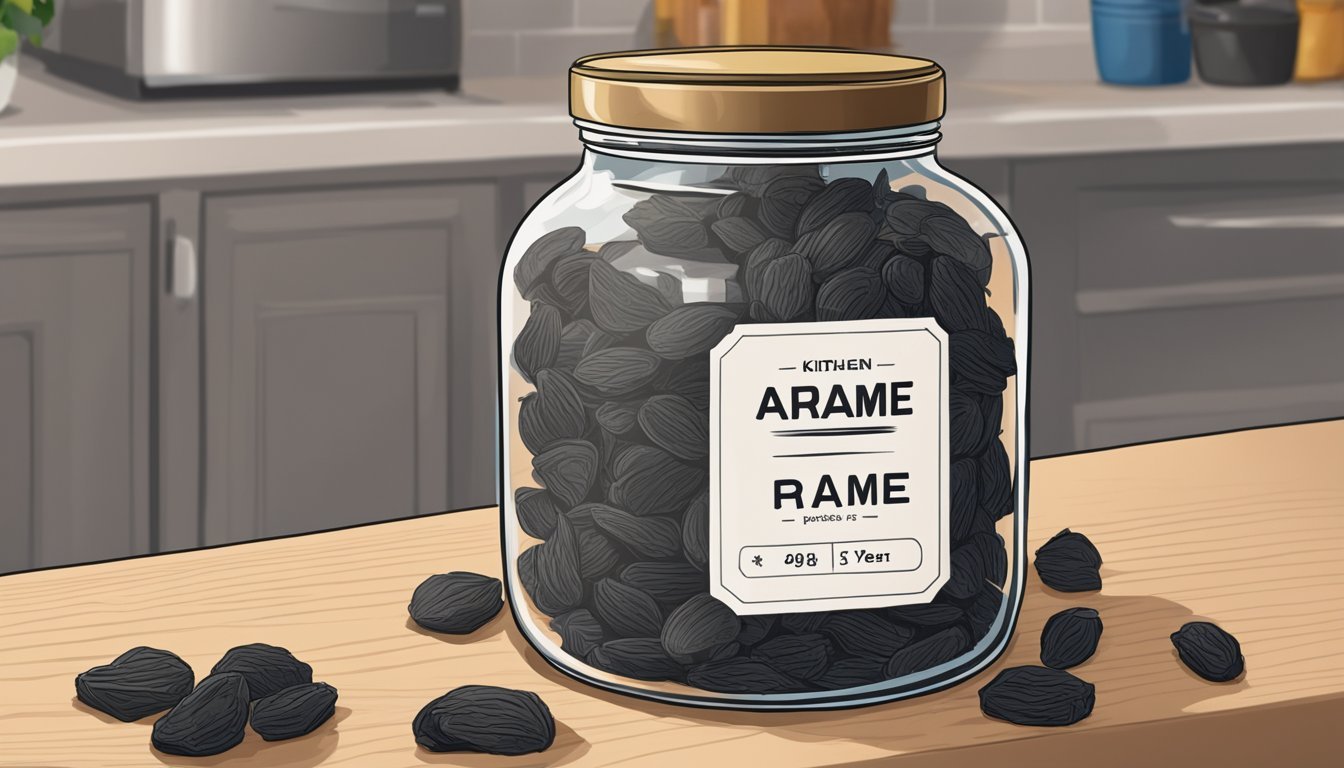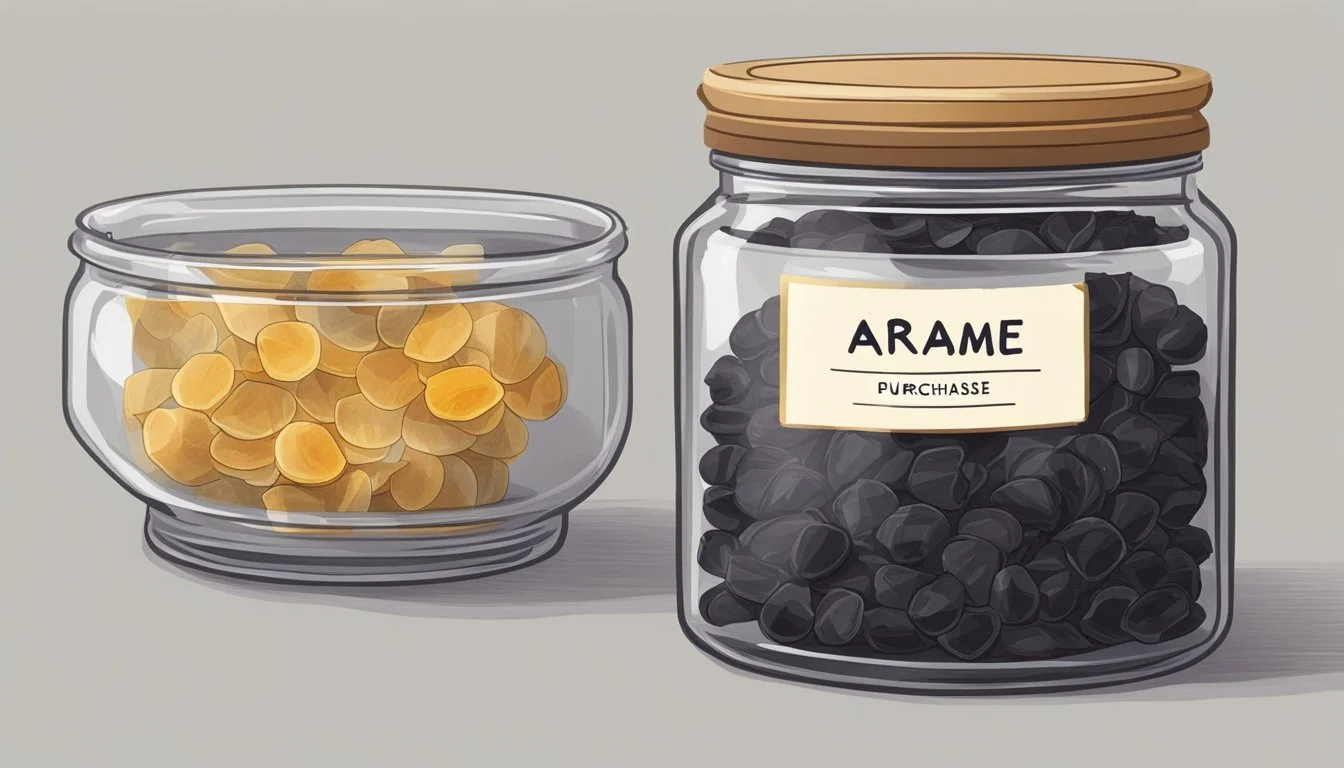How Long Does Dried Arame Last?
Shelf Life and Storage Tips
Dried arame (how long does dried arame last?) is a shelf-stable sea vegetable commonly used in Japanese cuisine both for its flavor and health benefits. Its longevity is notable, making it a convenient pantry item for those who appreciate its mild, sweet taste without the hassle frequent grocery shopping. Properly stored, dried arame can last a significant amount of time, retaining its quality and nutritional value.
The longevity of dried arame hinges upon optimal storage conditions. It should be kept in a cool, dry place away from direct sunlight and moisture, which can significantly extend its shelf life. When stored properly, dried arame can last from six months to a year without a notable degradation in quality. Over time, however, its flavors and textures may become less pronounced, and its nutritional content may diminish.
Understanding the shelf life of dried arame is essential for both food safety and culinary quality. While this seaweed does last longer than many fresh ingredients, it is not immune to spoilage. Consumers should always check for signs of moisture, unusual odors, or discoloration, as these can indicate that the arame is no longer suitable for consumption. With attention to storage details, dried arame can remain a reliable and flavorful component of one’s cooking repertoire for an extended period.
Understanding Arame
Arame is a brown seaweed with a mild, semi-sweet flavor, making it a versatile ingredient in various culinary applications. It is rich in nutrients like iodine and dietary fiber, and it's an essential part of traditional Japanese cuisine.
Different Types of Arame
There are not distinct "types" of Arame per se, as Arame itself is a specific type of seaweed. It is sometimes confused with other seaweeds like kelp (how long does kelp last?), but it is known for its unique texture and taste profile.
Botanical Profile of Arame
Botanically referred to as Eisenia bicyclis, Arame is a kelp variety that thrives in cold ocean waters. Visibly, it characterized by its long, wiry strands that exhibit deep brown hues. Once harvested, it is commonly dried for preservation and easy use in cooking.
Nutritional Value of Arame
Nutrients in Arame (per 100g serving):
Calories: 35 kcal
Protein: 9.6 g
Carbohydrates: 3.72 g
Dietary Fiber: 31.2 g
Minerals:
Calcium: 150 mg
Magnesium: 770 mg
Iron: 11.2 mg
Iodine: High levels
Vitamins:
Vitamin A: 180 IU
Sodium: 872 mg
Arame's nutritional profile includes an abundance of minerals like calcium, iron, and magnesium. It is an excellent source of iodine, a nutrient essential for thyroid function, and it also contains vitamin A and a significant amount of dietary fiber. Antioxidants are also present, which contribute to the overall benefits of incorporating seaweed into a balanced diet.
Preparation and Usage
Before incorporating arame into various dishes, it's essential to understand the proper preparation techniques to optimize its texture and flavor.
How to Prepare Arame
Arame, a delicate sea vegetable, requires rinsing under cold water to remove any residual salt or debris. After rinsing, soaking it in water is the next critical step. They should soak arame in cold water for approximately 10 to 15 minutes or just five minutes to avoid leaching out vital nutrients. Once tender, the arame is ready to be used in cooking. Any sand or shells should settle at the bottom, ensuring they are not disturbed when using the soaking water.
Incorporating Arame into Dishes
Arame's versatile nature allows it to adapt well to a variety of dishes. It's often used in soups, salads, and mixed with rice. When adding to a stir-fry, one can heat sesame oil (how long does sesame oil last?) in a skillet, then sauté onions until translucent before layering the arame on top, adding water, and allowing it to simmer. The arame can also be combined with tofu (how long does tofu last?), enriched with miso, or flavored with ginger for a more complex dish. Due to its mild flavor, it complements other sea vegetables like nori (how long does nori last?), kelp, and dulse in sushi rolls. With its ability to absorb the flavors of broths and oils, arame enhances the overall taste profile of each dish it's included in.
Storing Arame
Proper storage of arame is crucial for maintaining its quality and extending its shelf life. Understanding the appropriate conditions and recognizing signs of spoilage can help preserve arame's edible state.
Optimal Storage Conditions
To keep arame in its best condition, it should be stored in an airtight container to protect it from moisture and other contaminants. A cool and dry place, such as a pantry or cupboard, is ideal for preventing the degradation of quality. Exposure to direct sunlight and varying temperatures should be avoided to maintain the integrity of arame's subtle flavor and nutritional content.
Maximizing Shelf Life
The shelf life of dried arame can be extensive when stored correctly. Ensuring the arame is completely dry before sealing it in an airtight container helps prevent the introduction of moisture, which can lead to spoilage. Containers should be kept away from sources of heat to prevent any potential damage to the arame. While there is no definitive expiration date, following these storage guidelines will assist in keeping arame edible for a longer period.
Signs of Spoilage
Signs that arame has spoiled include:
Changes in aroma: A deviation from its normal sea-like smell can indicate spoilage.
Visible mold or discoloration: The presence of mold or an unusual color on the arame is a clear indication it should not be consumed.
Texture changes: Arame that feels overly sticky or slimy rather than dry and leathery may have been compromised.
It is essential to regularly check stored arame for these signs to reduce the risk of foodborne illness. Spoiled arame should be discarded promptly to prevent contamination of other food items.
Health and Dietary Benefits
Arame, a sea vegetable, is recognized for its numerous health benefits, including being nutritious and low in calories, making it a valuable ingredient for vegetarian and vegan dietary practices.
Health Benefits of Arame
Arame is a sea vegetable that is a rich source of minerals, particularly iodine, which is essential for thyroid function. It also contains vitamins, like Vitamin A, which is important for healthy eyesight and immune system function. Arame's low calorie content makes it favorable for weight management. Its fiber contributes to digestive health and helps with satiety, which can aid in weight loss efforts.
Arame in Dietary Practices
Incorporating arame into diets, especially plant-based ones like vegetarian and vegan, adds not only nutritional value but also variety in texture and flavor. Arame is versatile and can be easily included in salads, soups, and stir-fries. Given its nutritional profile, arame supports cellular repair processes and can enhance the overall nutrient density of meals, benefiting one's health without significantly increasing caloric intake.
Culinary Applications
The culinary adaptability of arame, a mild and versatile sea vegetable, lends itself to a spectrum of dishes from traditional Japanese soups and salads to fusion cuisine, enhancing meals with its unique color, texture, and nutrient profile.
Popular Arame-Infused Recipes
Arame is often incorporated into Japanese dishes where its cool, mild flavor and dark color enhance the visual and taste experience. It's a common ingredient in:
Miso soup: Arame can be added to miso soup, delivering a subtle sea-flavored twist to the classic dish.
Seaweed salad: Its mild taste complements salads, often mixed with sesame oil and ginger for zest.
Rice dishes: When mixed with rice, it provides a nutrient-rich component, often paired with soy sauce (how long does soy sauce last?) to spotlight its flavor.
Stir-fry: Arame's texture holds up well in stir-fries, especially when tossed with vegetables and tofu.
Fusing Arame with Other Cuisines
Chefs around the world are embracing aramé as they experiment with sea vegetables in a variety of regional recipes. Arame's compatibility with a multitude of ingredients allows it to blend seamlessly into:
Pasta dishes: Arame can be added to pasta, for a twist on traditional flavors, often with a dash of toasted sesame for a nutty aroma.
Cool Salads: Its cool, slinky texture makes it a refreshing addition to salads, lending a touch of umami.
Soup and stew bases: Arame can enrich broths and dashi-based stews with its deep, oceanic flavor.
Sandwiches and wraps: When paired with rice or alaria, arame can be used in nori wraps for a nutritious on-the-go snack.
Safety Precautions and Quality
When purchasing and storing dried arame, it's crucial to consider factors that influence both its quality and safety. The shelf stability of arame is highly dependent on its quality at the time of purchase and the avoidance of potential contaminants during storage.
Identifying High-Quality Arame
High-quality arame (Eisenia bicyclis) should exhibit a dark brown color, reflecting its rich antioxidant content. When selecting arame, buyers should look for organic certifications to ensure it is free from undesirable concentrations of heavy metals or other contaminants often associated with conventional farming practices. Those certifications denote that the seaweed has been harvested and processed following stringent organic standards, which favor sustainability and purity.
Potential Contaminants and Safety
Dried seaweed like arame can be susceptible to moisture, which may lead to the growth of mold. It is essential to store arame in a cool, dry place to prevent mold development. Airtight containers are recommended to preserve quality and extend shelf life. Buyers should check for any off odors or unusual dampness as indicators of spoilage. While arame naturally contains iodine, consumers should be cautious of overconsumption, particularly if they are sensitive to high iodine intake. Regular consumption should be within the recommended limits to avoid iodine toxicity. Moreover, due to the potential accumulation of heavy metals in marine environments, ensuring arame is sourced from clean waters is a safety priority to prevent exposure to toxins such as arsenic or lead.
Shopping Guide
When looking for dried arame, consumers should be aware of the best places to purchase and how to select a quality product. This section provides clear guidance on these key aspects.
Where to Buy Arame
Health Food Stores: Health food stores often stock a variety of sea vegetables, including arame. It can typically be found in the international or the specific seaweed section.
Asian Markets: Arame and other sea vegetables are staples in Asian cuisine, making Asian markets an excellent place to purchase them. They often offer a wider selection, sometimes at better prices.
Online Retailers: For convenience, online health food retailers and specialty stores often carry dried arame. Ensure the seller is reputable to avoid buying old or improperly stored stock.
Selecting the Best Product
When selecting dried arame, one should consider a few important factors:
Integrity of Packaging: Ensure that the package is sealed properly and does not show any signs of damage. Compromised packaging can affect the freshness and quality.
Color and Texture: Look for arame that has a deep, dark color and a firm, dry texture. It should be free from any signs of moisture or sogginess, which can indicate poor storage.
Expiration Date: Check the expiration or best-by date to ensure the arame is not past its shelf life. While dried sea vegetables like arame have a long shelf life, they can lose flavor and nutritional value over time.
Storage Recommendations: After purchasing, store dried arame in a cool, dry place away from sunlight. Some packages may recommend refrigeration after opening to preserve quality and extend shelf life.
Additional Tips and Tricks
When storing dried arame, understanding how to preserve its quality extends beyond just shelf life, leading to more flavorful dishes. These tips focus on enhancing arame's texture and incorporating it into different culinary applications.
Enhancing Flavors and Textures
The mild flavor of arame can be enriched by sauteing it with aromatic ingredients. Start by rehydrating arame and then:
Saute with onions until they're translucent to unlock deeper flavors.
Add a pinch of sea salt (how long does sea salt last?) to intensify the natural sea flavor of arame.
Introduce a small amount of grated ginger or sesame oil for a subtle Asian twist.
Experimenting with rehydration techniques can also alter arame's texture. Soaking in warm water for about 10-15 minutes softens it adequately for most recipes.
Creative Use Cases
Arame, versatile in its use, can be incorporated into numerous dishes:
Toss rehydrated arame into a soup or stew to add a sea-vegetable goodness.
Combine arame with seafood and citrus notes in a salad for a refreshing mix.
Incorporate into vegetable dishes; its sweet flavor complements both raw and cooked veggies.
For those with a taste for innovation, arame can be a stand-in for nori as a sushi rolling ingredient or be used to garnish various Asian dishes to add both flavor and presentation flair.










